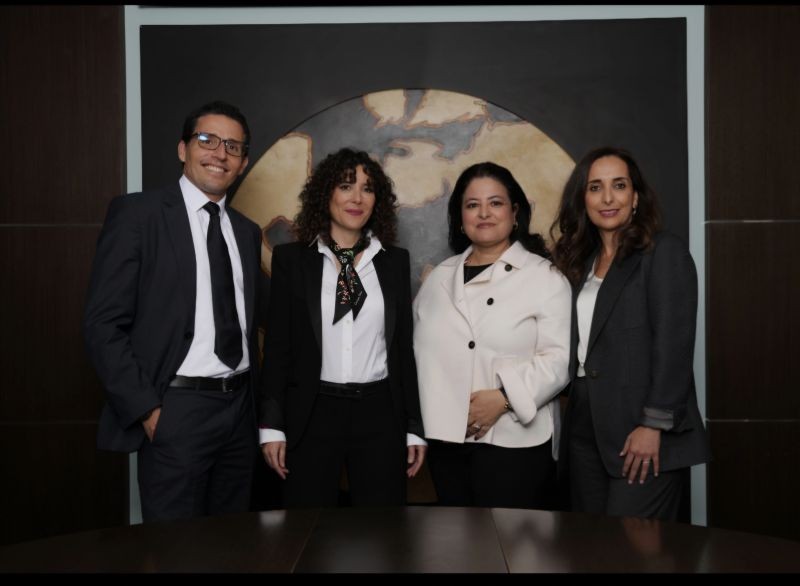With the COVID-19 pandemic, teleworking has become the prerogative of a large part of the working population. It is a necessary measure to continue the activity of the company, but it is not without difficulty. It involves a necessary reorganization of the company’s operations and places a bet on employee productivity. If most employees, using the tools and means made available to them, were able to find their feet and reinvent a way of working, is that enough? After 1 month of confinement, what initial assessment elements do we have at our disposal? What role should managers adopt towards their teams to promote productivity? How can the Human Resources function, supported by top management, contribute to maintaining a high level of motivation? When working from home, the boundaries between professional and personal life become blurred, so how can you maintain a balance?
In this article, we will try to look at these different subjects and try to provide some answers.
Productivity, a concept that cannot be reduced to connection time in front of the screen
With confinement, the codes have changed. Given the crisis situation, resources whose positions have been retained in teleworking are expected to remain mobilized. After a few days of confusion and installation, each company sets up its response strategy. And everyone must use their skills to make their contribution. A necessary prerequisite for establishing a healthy relationship with remote colleagues is trust. Without a certain level of trust in employees, relationships are likely to deteriorate and lead to a significant demobilization of resources.
This is what some companies have experienced, having decided to adopt drastic control methods. Assimilated to “coping”, they risk generating perverse effects, and conversely, encouraging the employee to do only the strict minimum of what is asked of them, or even less.
Fortunately, it seems that these phenomena remain isolated.
A period of confinement which would seem rather conducive to improving individual productivity
We interviewed several employees at our clients, at different levels of responsibility. Contrary to general beliefs, several companies having adopted the right reflexes are pleased to see a gain in productivity among their employees. Indeed, several factors have made it possible to improve productivity during this period of confinement and in particular to save many previously unproductive hours. The elimination of travel and the adoption of videoconferencing systems have saved many hours spent in transport. Meetings generally start on time, are shorter and more efficient. At home, as long as you have an office or can isolate yourself, you benefit from greater concentration, being less disturbed by frequent interruptions.
For people who are used to and like a certain autonomy, remote working can be a real catalyst for productivity. With an optimal working environment and a good level of concentration, favored as we said earlier, by factors that can improve productivity, as well as a fair balance in follow-up and delivery points, some people will not only improve their productivity but also flourish more and reveal themselves.
Conversely, for people who are not familiar with the use of digital tools, for example, teleworking can be more difficult, destabilizing and even counterproductive in certain cases.
What lessons can we learn from this first stage of confinement?
Ce n’est pas tant le type de job mais réellement la personne et les différents types de personnalité qui vont être capable de s’adapter et de tirer le maximum du télétravail. Ce constat amène également son principal risque : que faire pour aider l’ensemble de ses salariés à garder le cap et maintenir un bon niveau de productivité ? Plusieurs leviers peuvent favoriser la productivité.
- An essential lever: the role of the Manager Coach.
A Manager Coach who must know how to deploy several qualities that should already be part of his toolbox but are more necessary than ever in this unprecedented context: vision, trust, listening and proximity, kindness, agility, etc.
While it is obviously necessary to ensure regular monitoring of the progress of the work, this must be done above all through proximity and communication. During this period, some people will be much more vulnerable than others, for various reasons (loneliness, poor working conditions, etc.). The position of the manager coach is therefore essential to understand your employees and adapt to their needs. If resources feel confident and supported, they will demonstrate a higher level of commitment. But they will perhaps do it in their own way, namely, working in the evening, or very early in the morning… It is necessary to maintain a certain level of kindness and empathy. The manager must take into account everyone’s constraints and manage his team on the basis of clearly defined results or objectives.
Agile management therefore must be based on regular monitoring of employees and clearly defined objectives/tasks. The more the resources need to be supervised, the more the manager must be, on the one hand, close to his collaborator, with regular follow-up points, alternating the tools (telephone, videoconference, etc.) via formal invitations. The employee must also provide a regular update on their progress and remain proactive. The cursor will automatically place itself in a situation of balance if the main principles (trust, communication and proximity, agility, etc.) are respected.
An integrated view of the system and interactions, to be supported by HR teams and top management
The entire company value chain is impacted by the pandemic and many are experimenting with having part of their employees teleworking and the other on site. In these circumstances and in the absence of a physical meeting, it is necessary to be disciplined and to maintain/establish a written formalism in order to transcribe the discussions/decisions taken. All workflows must have been traced and the connections streamlined.
A significant internal communication effort must also be put in place. Official announcements from top management, clear objectives for the company, transparency regarding results, announcements on key events to generate the mobilization of the troops are also essential and will reinforce the efforts of Managers-Coaches.
Mid-term evaluations must be carried out. It is necessary to ensure that no resource is isolated. Coach Managers will also need to be evaluated on their ability to manage and maintain the morale and productivity of their teams.
A dashboard balancing the personal and the professional to be put in place
Can this confinement be seen as an opportunity to view work differently?
For the employee, that of finally finding a compromise and a balance between his family life and his professional life, and consequently, of building a win-win relationship with his company. On the condition of building this new balance. Of course, it is sometimes complicated to juggle between sending an email and giving the children snacks or preparing meals. The boundaries between work hours and private life tend to blur. However, it seems that having all of your concerns in front of you ultimately allows for a better ability to concentrate. A best practice brought up by our parent colleagues is the reconstitution of a pro-personal mental “dashboard”. With the help of good communication with your employer, it is possible to reorganize your working day taking into account the rhythm of your family. Work rituals and a routine can be put in place. Overhauling your entire organization and imagining a new way of operating, by empowering your colleagues and your family, is also an excellent way to oil the machine and regain control over your time.
For the employer, this phase of confinement also makes it possible to strengthen the managerial skills of its teams in a necessary way, to establish a manager-coach culture… Furthermore, teleworking considered over the long term could be an interesting avenue to study. Like certain multinationals, the Moroccan company could introduce 20% teleworking (1 day per week of teleworking for employees on rotation, for example) for some of its employees, in order to allow this increase in concentration and productivity and at the same time optimize its spaces.
Authors:
Sophie Pinard, Manager at Valyans
Tarik Slaoui, Associate Director of Synaxis











